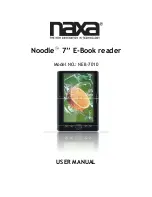3
CAUTION: This information is subject to change without prior notice.
Copyright 2016, Opticon Sensors Europe BV, all rights reserved.
This manual may not, in whole or in part, be copied, photocopied, reproduced, translated or converted to any electronic or machine readable form
without prior written consent of Opticon Sensors Europe.
THE GENERAL USE AND FUNCTIONING OF THE BAR CODE SCANNER IS DESCRIBED IN THIS DOCUMENT. ALSO GENERAL SETUP
INSTRUCTIONS TO GET STARTED ARE DESCRIBED IN THIS DOCUMENT. FOR FURTHER INSTRUCTIONS CONSULT OPTICON OR YOUR
LOCAL DEALER.
1
Overview
The batch demo application for the OPN2004/5/6 and PX20 demonstrates the ability of these devices to save
scanned barcode data into a file on the device, and for the devices to deliver the scanned barcode data file to a local
PC.
The data files can be retrieved from the scanners either by using USB-MSD (Mass Storage Device; the barcode
scanner effectively becomes a small USB thumb drive) or by using the OseComm or NetO file transfer protocols over
USB-VCP (Virtual COM Port; serial port emulation).
Since these barcode readers don't have a display to show any instructions to the user, this demo application
implements a user interface that consists entirely of using just the 2 keys to scan barcodes. This brief setup guide
describes all of the demo application’s features as well as handling instructions.
More product details, additional support and more configuration options to customize this application to your own
preferences (by using the Universal Menu Book) can be found at
1.1
Capabilities of the Batch demo application
The following features are currently supported:
Scanning and storing barcodes into a database file on the internal RAM disk.
Retrieving the barcode database file via a local PC or laptop using the OseComm or NetO protocols over USB-
VCP.
Using the barcode readers as USB Mass Storage Devices (MSD) to retrieve the barcode database file.
OSE Universal Menu Book support to configure all barcode decoders, prefixes and suffixes, read modes, and
various other options.
Storing of configurations in non-volatile memory to allow all settings to be restored after a reset.
Configuring the output format of the database file.
Simple firmware upgrading via USB-VCP by using Appload, Opticon’s utility for flashing firmware on barcode
readers.

















